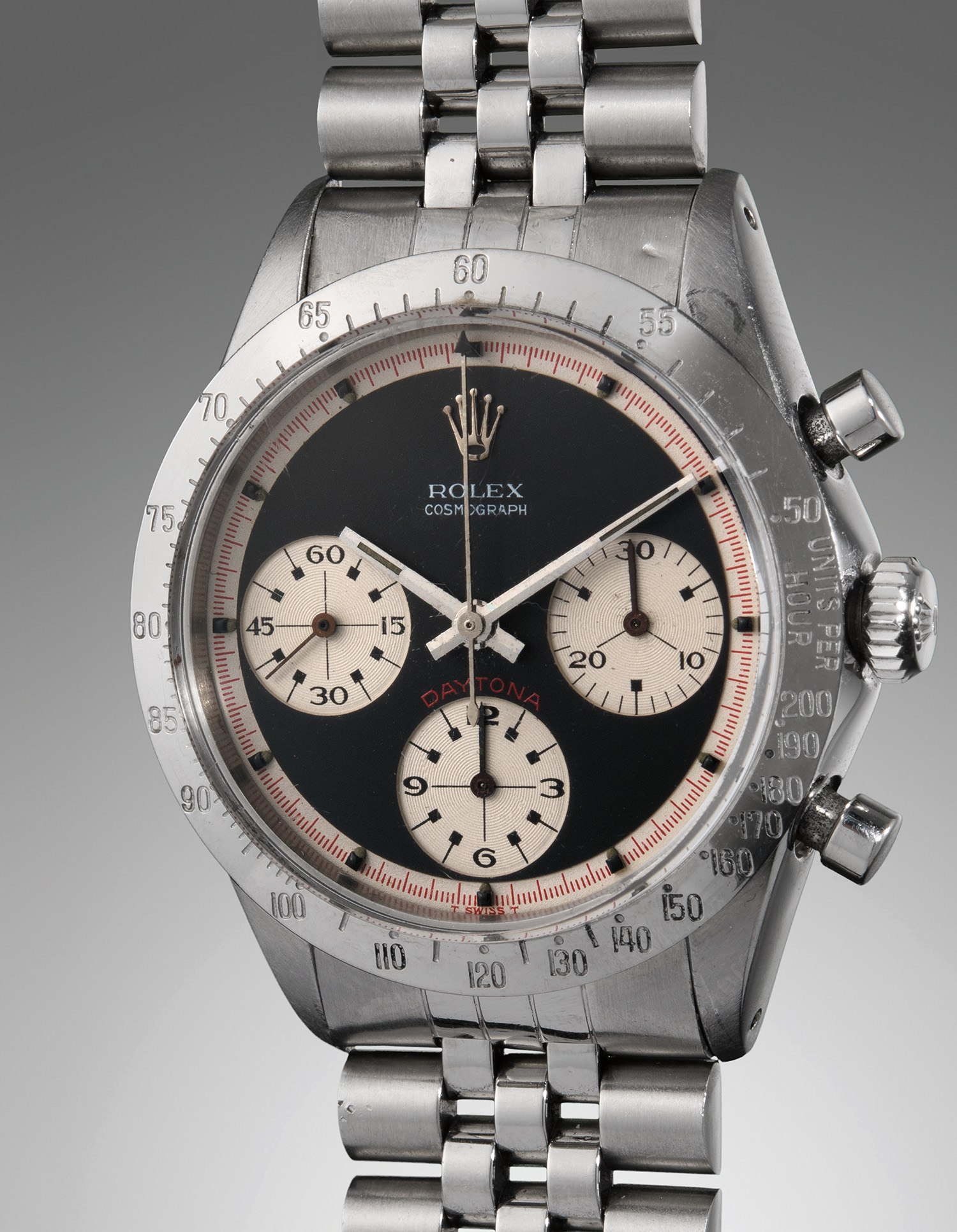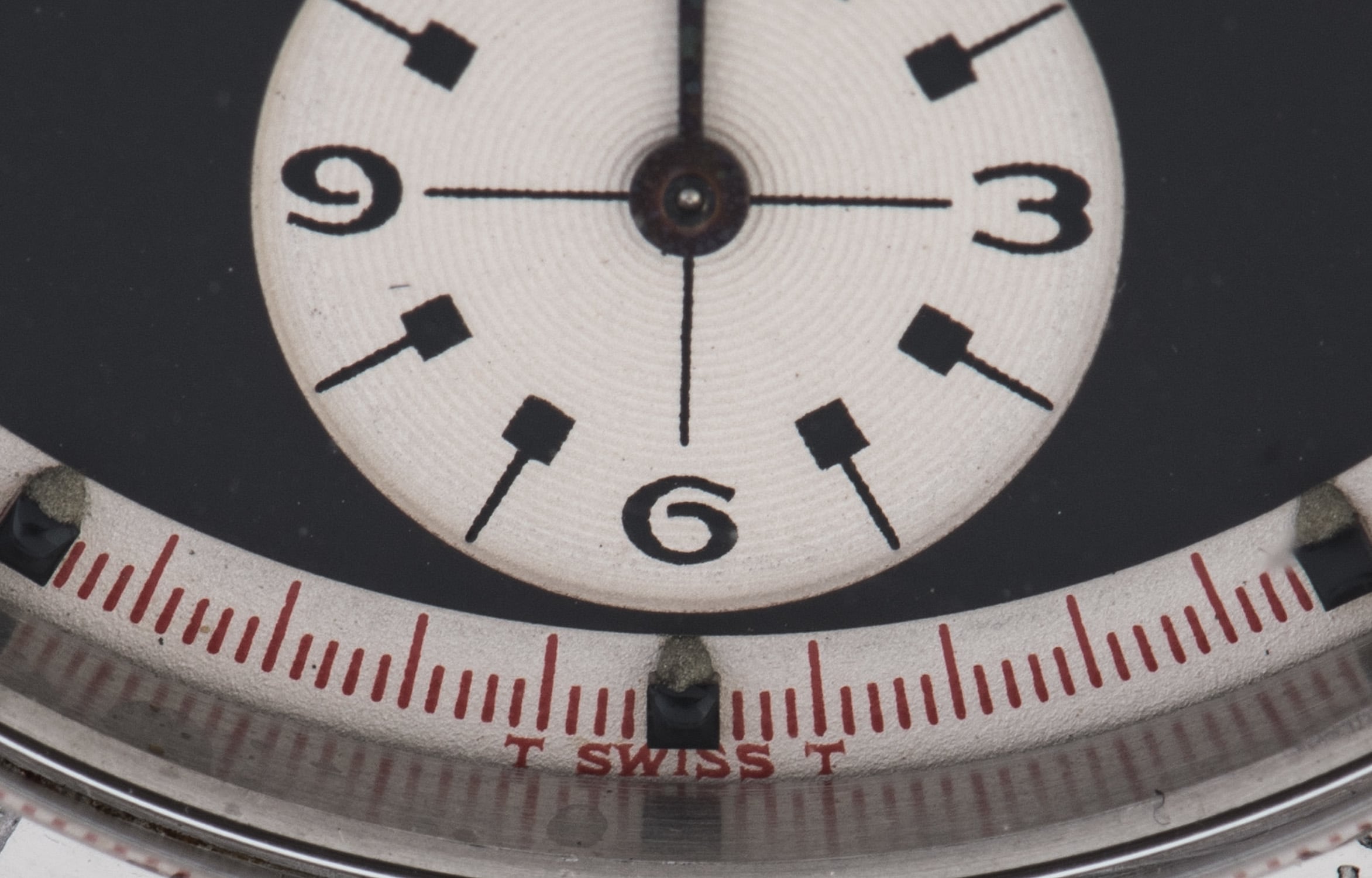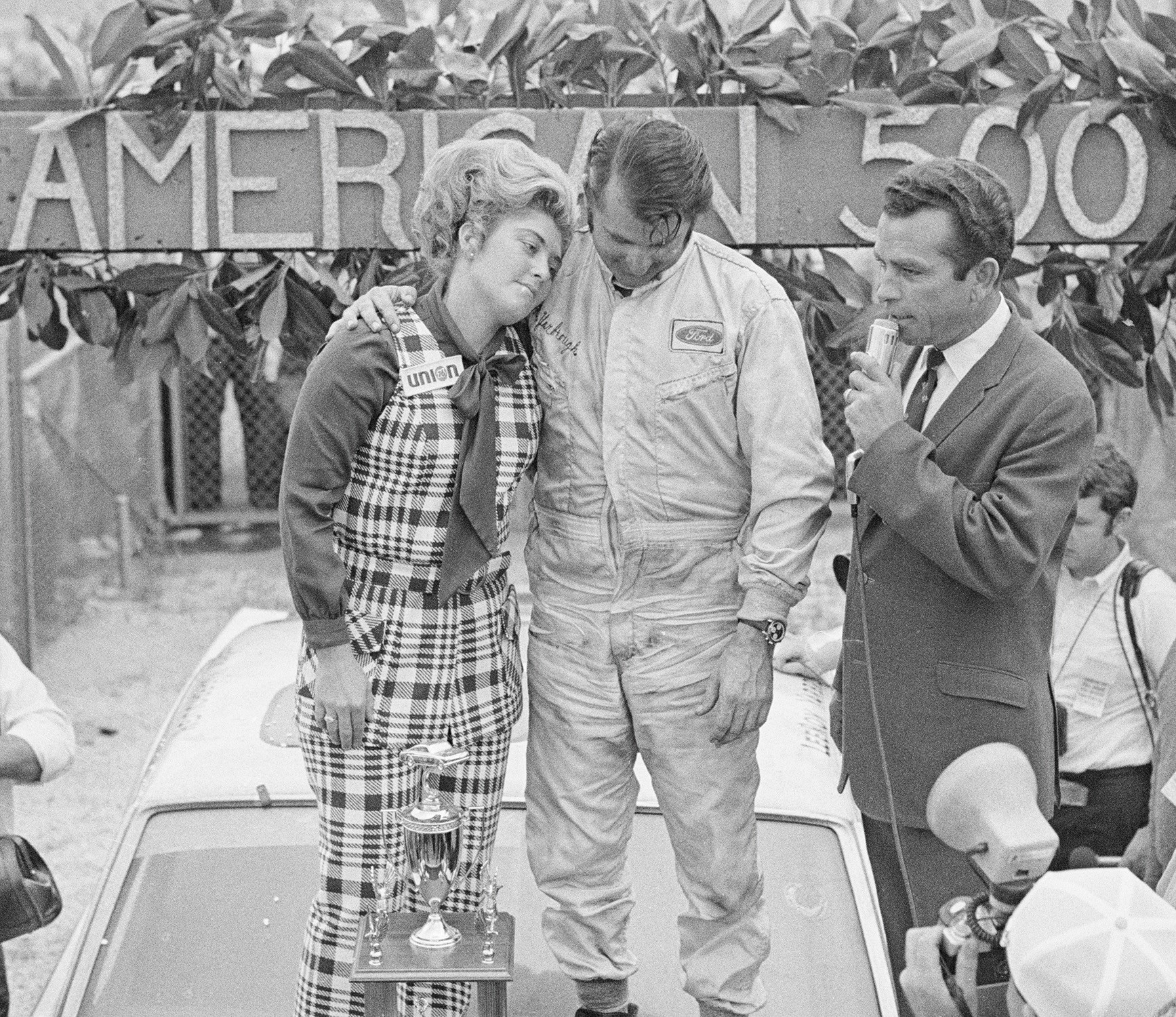





13
Rolex
Ref. 6239
Cosmograph Daytona, “Paul Newman”
A very fine and historically important stainless steel chronograph wristwatch with “Paul Newman” dial, awarded to LeeRoy Yarbrough, winner of the Daytona 500 in 1969
Full-Cataloguing
The present lot underscores the legendary Daytona model’s racing pedigree as it is the earliest known Rolex Daytona offered as a prize to the winner of any Daytona race. After being awarded to Lonnie “LeeRoy” Yarbrough by Rolex in the summer after his Daytona 500 win, he wore it during competition as seen in multiple photographs; most notably, it is visible on his wrist during his American 500 win in 1969.
During his relatively brief racing career, Yarbrough set numerous records on the Grand National stock car circuit, earning him laudatory titles such as “American Driver of the Year” and “Ford’s Man of the Year.” His fascination with cars began while working at a garage in Jacksonville and quickly progressed to racing the backroads of west Jacksonville (much to the chagrin of local police). Along the way, he gained a following of local kids and befriended the likes of fellow west Jacksonville native Ronnie Van Zant, a founding member of Lynyrd Skynyrd. At 16, after dropping out of high school, LeeRoy claimed his first victory at the Jacksonville Speedway in his own 1933 Ford street roadster and by 1960 had started his NASCAR career in the Sportsman Division– a low ranking circuit featuring full‐sized NASCAR tracks.
After winning a number of short‐track races in the mid-1960s, Yarbrough’s career only saw moderate success in the latter half of the decade. In 1969, however, Yarbrough climbed to the top of NASCAR in what would become one of the greatest racing seasons in NASCAR history. Behind the wheel of his Junior Johnson Ford Torino Talladega, he strung together victories at the coveted Daytona 500, the World 600, and the Southern 500. These wins, in one season, at NASCAR’s "richest" race, "longest" race, and "oldest" race, respectively, gave Mr. Yarbrough the elusive “Triple Crown” title – and the added bonus of being the first person to accomplish such a feat. Only two other drivers have ever completed the Triple Crown: Bill Elliot and Jeff Gordon. His historic 1969 season ended with a total of seven Grand National wins, earning him a then NASCAR season winnings record of $188,609.
Following this string of impressive victories, Yarbrough’s racing career would come to an end in the early 1970s after a series of unfortunate crashes. His watch, presented here for the first time publicly, ensures that his memory will not be forgotten. Having fallen on hard times after his racing career, Yarbrough pawned the watch at a local Jacksonville pawnbroker in the late 1970s or early 1980s. The pawnbroker immediately recognized Yarbrough, and knew exactly who would be interested in purchasing a watch steeped in racing lore. The father of the consignor of the present lot was a self-described “car man”, having spent most of his life racing and selling cars. A “greaser” in the 1950s, the consignor’s father would regularly drag race on the beach at Daytona to earn extra money and had followed Yarbrough’s career from its beginning. After receiving the call from the pawnbroker, the consignor’s father immediately went over to the location on the west side of Jacksonville and purchased the watch. It has remained in the same family ever since. According to the consignor, his father added a Rolex Jubliee bracelet in the mid 1970s and only wore it a handful of times, having spent most of its life in a drawer.
In researching this watch, numerous photos of Yarbrough wearing this exact watch were found, including the photo shown here. Combined with an emailed statement from Rolex USA written in 2016 that confirms its sale and delivery to the Daytona International Speedway in 1969, its provenance is extraordinary.
Apart from the present example’s historically important provenance, it is inherently collectible, featuring a gorgeous “Paul Newman” exotic dial with the highly sought after tricolor configuration. The exceptionally well-preserved dial is vibrant, and exhibits the delightful "sing-a-song"-style "T Swiss T" designation at 6 o’clock that is so sought after today.
The importance of the present lot, therefore, cannot be overstated. It’s a watch that brings together the most famous watch brand, with its most sought after model, fitted with the most desirable dial, and given to arguably the best NASCAR driver of the 1960s for winning the 1969 Daytona 500.
This extraordinary "Paul Newman" Daytona originally lived an exciting life as part of its daring owner’s racing success, before it would be stored away for decades. An ultimate trophy watch for collectors, Phillips is thrilled and proud to offer it at auction for the first time ever.
Rolex
Swiss | 1905Founded in 1905 England by Hans Wilsdorf and Alfred Davis as Wilsdorf & Davis, it soon became known as the Rolex Watch Company in 1915, moving its headquarters to Geneva in 1919. Like no other company, the success of the wristwatch can be attributed to many of Rolex's innovations that made them one of the most respected and well-known of all luxury brands. These innovations include their famous "Oyster" case — the world's first water resistant and dustproof watch case, invented in 1926 — and their "Perpetual" — the first reliable self-winding movement for wristwatches launched in 1933. They would form the foundation for Rolex's Datejust and Day-Date, respectively introduced in 1945 and 1956, but also importantly for their sports watches, such as the Explorer, Submariner and GMT-Master launched in the mid-1950s.
One of its most famous models is the Cosmograph Daytona. Launched in 1963, these chronographs are without any doubt amongst the most iconic and coveted of all collectible wristwatches. Other key collectible models include their most complicated vintage watches, including references 8171 and 6062 with triple calendar and moon phase, "Jean Claude Killy" triple date chronograph models and the Submariner, including early "big-crown" models and military-issued variants.